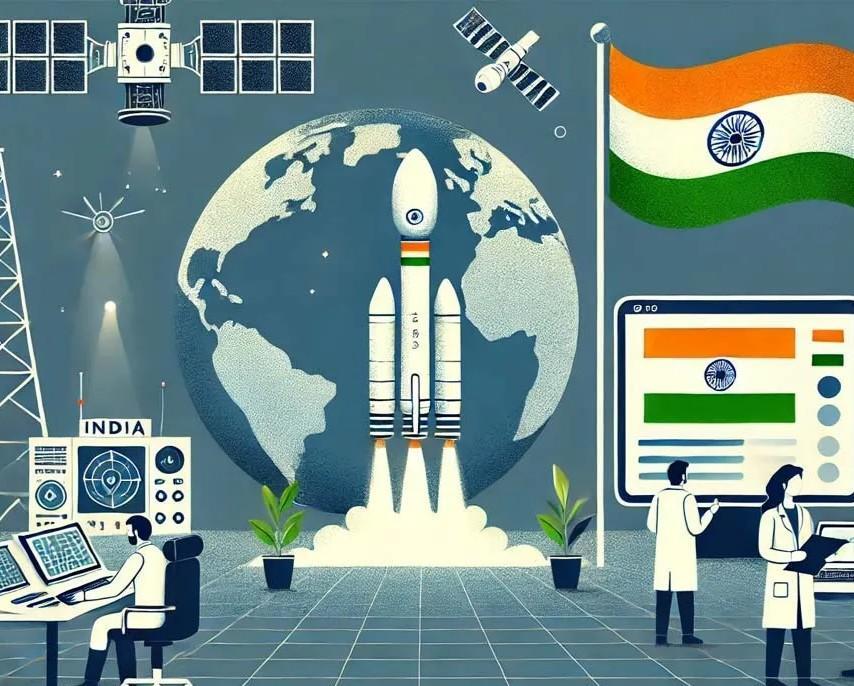
Charting new horizons: India’s space sector comes of age
The Indian space sector has made tremendous strides in recent years, with a series of groundbreaking missions that have propelled the country to the forefront of global space exploration. From the Chandrayaan and Mangalyaan missions to the triumphant landing of Chandrayaan-3 on the south pole of the moon, India has consistently demonstrated its ability to execute complex space missions at a fraction of the global costs.
The space sector has long been a source of national pride for India, with its humble beginnings dating back to the 1960s. However, it wasn’t until the launch of the Indian Space Research Organisation’s (ISRO) Polar Satellite Launch Vehicle (PSLV) in 1994 that the country started to make significant strides in space exploration. The PSLV’s maiden launch was a major success, marking the beginning of a new era for India’s space program.
One of the most significant milestones in India’s space journey was the launch of the Chandrayaan-1 mission in 2008. This mission was a major breakthrough for ISRO, as it marked the country’s first foray into lunar exploration. Chandrayaan-1 was equipped with a range of instruments designed to study the moon’s surface, composition, and atmosphere. The mission was a huge success, providing scientists with a wealth of new information about the moon and its history.
The success of Chandrayaan-1 was followed by the launch of the Mangalyaan mission in 2013. Mangalyaan, also known as the Mars Orbiter Mission, was designed to study the Martian atmosphere and search for signs of life on the red planet. The mission was a remarkable achievement, as it was launched at a fraction of the cost of similar missions undertaken by other space agencies around the world.
The success of Mangalyaan was a testament to ISRO’s capabilities and its ability to execute complex space missions on a limited budget. The mission’s success also marked a significant milestone in India’s space program, as it demonstrated the country’s ability to explore beyond the orbit of the Earth.
The latest chapter in India’s space journey was the triumphant landing of Chandrayaan-3 on the south pole of the moon. This historic achievement marked a major milestone for the global space community, as it was the first time a spacecraft had landed on the moon’s south pole. The landing was a remarkable achievement, as it required ISRO scientists to overcome a range of technical challenges, including the difficult terrain and extreme temperatures of the moon’s south pole.
The success of Chandrayaan-3 is a testament to the tremendous progress that India has made in space exploration in recent years. The mission’s success has also reinforced India’s reputation as a major player in the global space community, and has demonstrated the country’s ability to execute complex space missions at a fraction of the global costs.
The success of India’s space program is not just limited to its scientific achievements, but also has significant economic and strategic implications. The space sector is a major driver of economic growth and innovation, and has the potential to create new opportunities for businesses and industries. The success of India’s space program has also enhanced the country’s strategic position, as it has provided a platform for India to engage with other space-faring nations and to promote its interests in the region.
The success of India’s space program is also a reflection of the country’s commitment to science and technology. The Indian government has recognized the importance of science and technology in driving economic growth and development, and has made significant investments in these areas. The success of India’s space program is a testament to the country’s commitment to science and technology, and has provided a platform for Indian scientists and engineers to showcase their capabilities.
In conclusion, India’s space sector has come of age, with a series of groundbreaking missions that have propelled the country to the forefront of global space exploration. From the Chandrayaan and Mangalyaan missions to the triumphant landing of Chandrayaan-3 on the south pole of the moon, India has consistently demonstrated its ability to execute complex space missions at a fraction of the global costs. The success of India’s space program has significant economic and strategic implications, and has reinforced the country’s reputation as a major player in the global space community.
Source: https://www.voicendata.com/opinion/charting-new-horizons-indias-space-sector-comes-of-age-8897816






